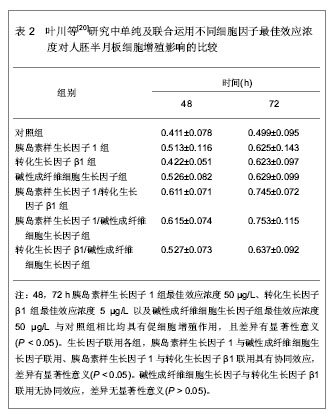| [1] Arnoczky SP, Warren RF.Microvasculature of the human meniscus.Am J Sports Med. 1982;10(2):90-95.[2] Gu YL, Wang YB.Treatment of meniscal injury: a current concept review.Chin J Traumatol.2010;13(6):370-376.[3] 王文治,冯世庆.膝关节半月板损伤的治疗进展[J].中国矫形外科杂志,2006,14(12):937-938,956.[4] 杜杰,张福金.半月板损伤治疗进展[J].临床军医杂志,2008,36(3): 457-459.[5] 张永先.膝关节半月板损伤的治疗进展[J].山东医药,2006,46(9): 77-78. [6] Buma P, Ramrattan NN, van Tienen TG, et al.Tissue engineering of the meniscus.Biomaterials. 2004;25(9): 1523-1532.[7] 李景红,杜江,黄金中.软骨组织工程种子细胞来源的最新研究进展[J].中国临床康复,2003,7(23):3240-3241. [8] Ferrari G, Cusella-De Angelis G, Coletta M, et al.Muscle regeneration by bone marrow-derived myogenic progenitors.Science.1998;279(5356):1528-1530.[9] Roeder RA, Lantz GC, Geddes LA.Mechanical remodeling of small-intestine submucosa small-diameter vascular grafts--a preliminary report.Biomed Instrum Technol.2001;35(2): 110-120.[10] Hadlock TA, Sundback CA, Hunter DA, et al.A new artificial nerve graft containing rolled Schwann cell monolayers. Microsurgery.2001;21(3):96-101.[11] Moore DC, Pedrozo HA, Crisco JJ 3rd, et al.Preformed grafts of porcine small intestine submucosa (SIS) for bridging segmental bone defects.J Biomed Mater Res A. 2004;69(2): 259-266.[12] Welch JA, Montgomery RD, Lenz SD, et al.Evaluation of small-intestinal submucosa implants for repair of meniscal defects in dogs.Am J Vet Res.2002;63(3):427-431.[13] Pribitkin EA, Ambro BT, Bloeden E, et al.Rabbit ear cartilage regeneration with a small intestinal submucosa graft. Laryngoscope.2004;114(9 Pt 2 Suppl 102):1-19.[14] Dejardin LM, Arnoczky SP, Ewers BJ, et al.Tissue-engineered rotator cuff tendon using porcine small intestine submucosa. Histologic and mechanical evaluation in dogs.Am J Sports Med. 2001;29(2):175-184.[15] Derwin K, Androjna C, Spencer E, et al.Porcine small intestine submucosa as a flexor tendon graft.Clin Orthop Relat Res.2004;(423):245-252.[16] Musahl V, Abramowitch SD, Gilbert TW, et al.The use of porcine small intestinal submucosa to enhance the healing of the medial collateral ligament--a functional tissue engineering study in rabbits.J Orthop Res.2004;22(1):214-220.[17] Reinholz GG, Lu L, Saris DB, et al.Animal models for cartilage reconstruction.Biomaterials.2004;25(9):1511-1521.[18] Hutmacher DW. Scaffolds in tissue engineering bone and cartilage.Biomaterials.2000;21(24):2529-2543.[19] Yang Q, Peng J, Lu SB, et al. In vitro cartilage tissue engineering with cartilage extracellular matrix-derived porous scaffolds and bone marrow mesenchymal stem cells. Zhonghua Yi Xue Za Zhi.2011;91(17):1161-1166.[20] 叶川,邓展生,李宝军,等.三种生长因子对人胚半月板细胞增殖及细胞表型的影响[J].中国修复重建外科杂志,2007,21(10): 1137-1141.[21] 中国知网.中国学术期刊总库[DB/OL].2013-4-12. https://www.cnki.net[22] 万方数据库.万方数据知识服务平台[DB/OL].2013-4-12. http://www.wanfangdata.com.cn[23] 叶川,尹培荣,向阳,等.人胚半月板细胞的优化获取及生物学特性研究[J].贵州医药,2004,28(12):1075-1077. [24] 解小龙.脱细胞半月板支架与骨髓基质干细胞联合培养的研究[D].辽宁:中国医科大学,2006:5-6. [25] 徐青镭,吴海山,周维江,等.兔骨髓干细胞向软骨细胞分化用于半月板组织工程重建[J].中国临床康复,2003,7(6):912-913.[26] 赵玉鑫,王洪,杨述华,等.半月板纤维软骨细胞与小肠黏膜下层的组织相容性[J].中国组织工程研究与临床康复,2007,11(2): 206-208. [27] 叶川,邓展生,申定珠,等.外消旋聚丙交酯与人胚半月板细胞构建复合物的研究[J].贵阳医学院学报,2007,32(6):591-594. [28] 卢华定,蔡道章,吴刚,等.胶原涂层聚羟基丁酸羟基戊酸酯体外构建组织工程半月板[J].中华实验外科杂志,2005,22(11): 1390-1392.[29] 刘和风,王俊飞,黄际河,等.丝素-胶原复合物半月板支架负载纤维软骨细胞的实验观察[J].山东医药,2008,48(15):27-28. |

.jpg)